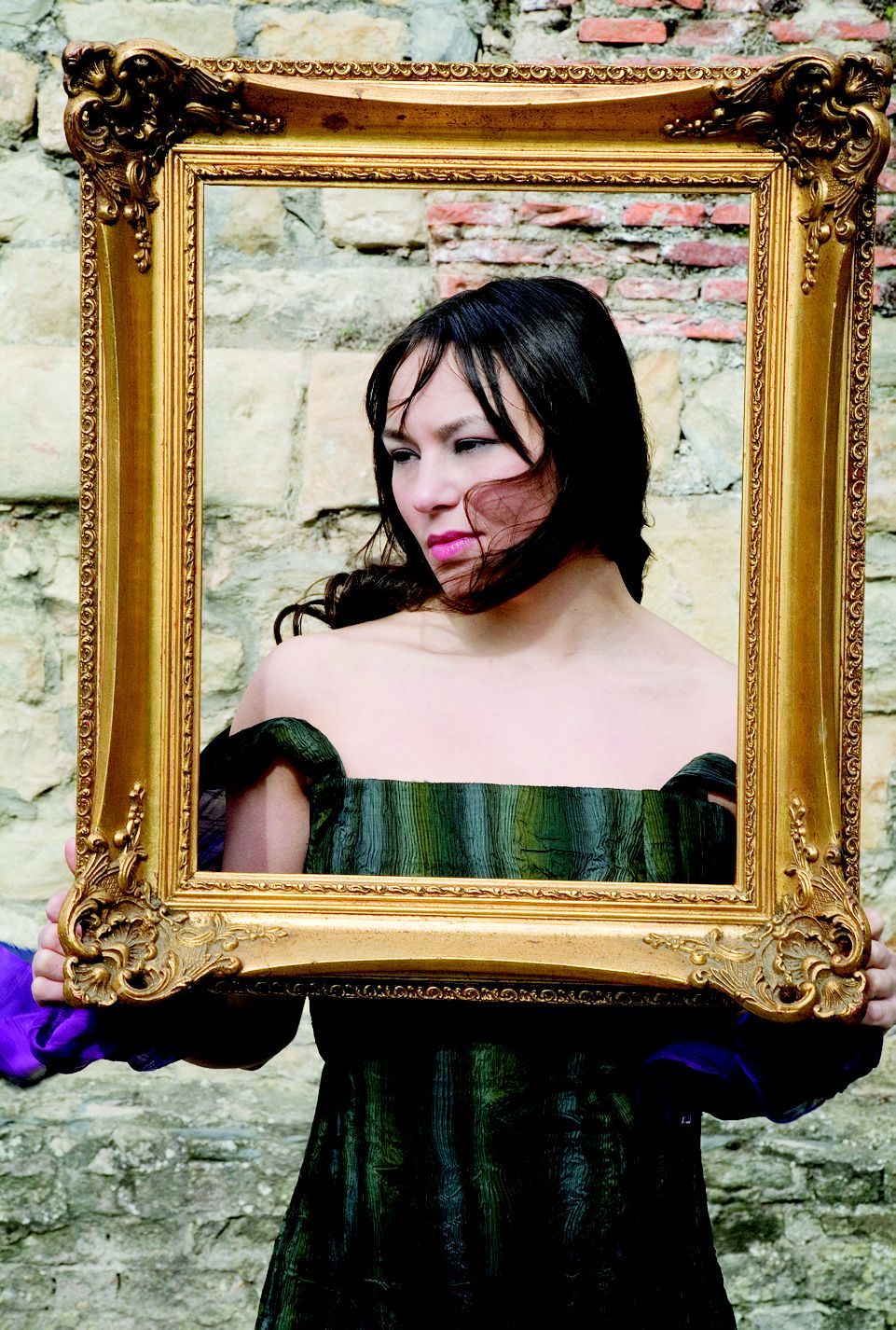The Sound and the Fury, Now Live

Tanya Tagaq, the Inuit throat singer who held a concert at the Buckley Recital Hall last Friday, cracked a light joke shortly before her performance began. Amplified by the microphone that she tore from the stand, her hearty laugh rumbled and echoed in the air. She kicked aside her high heels within seconds of her entrance and seemed completely at ease.
The audience did not quite share Tagaq’s composure. They politely listened to her anecdotes of the extreme cold in her hometown of Nunavik and her emotional connection with Inuit throat singing, an art Tagaq adapted from its original purpose as an entertaining contest for female duets. Tension flared up as soon as she opened her mouth and it lingered in the hall even after the concert was over. Several listeners near me were at the edges of their seats, their glances uneasily sweeping over others in the audience for an affirmation of normalcy or an explanation. Most stayed perfectly still — stunned, appalled, electrified or perhaps a mix of all three.
To call Tagaq’s performance avant-garde is misleading: throat singing is one of the oldest forms of music, though great regional differences remain. Propelled by breath rather than melody, Inuit throat singing traces its roots back to the hunt-and-gather times and has great cultural significance. Tagaq kept many elements of the traditional folk music alive on stage by inheriting its improvisational style and most of the guttural technique. Yet Tagaq’s experimental spirit is unmistakably present. Apart from merging two competing voices into one, violinist Jesse Zubot and percussionist Jean Martin added great texture and color to her one-hour sonic saga. Charged with a wide range of emotions, her rendition also carried ambitious intensity and sophistication that traditional Inuit throat singing does not concern itself with. The theatricality of her performance extended beyond her vocals and overwhelmed her body, which astonished and intrigued the audience as much as the raw sounds did.
I had never listened to Tagaq’s recordings prior to the concert, let alone watched her live, and I could relate to the shock that drove a dozen audience members to leave during the performance. In one dramatic moment, she knelt with her torso contorted forward as she lashed out full-blown roars that made death metal sound like sweet lullabies. Toward the end of the first “movement,” she moaned in short, urgent successions, her pitch roamed up and down as much as her free hand did on her body. And frequently she murmured in an indecipherable tongue, fervently telling a story we did not understand. If taken out of context, she might have been seen as violent, overtly sexual and altogether otherworldly. Yet Tagaq’s seemingly hysterical outbursts followed sensible progression of melody and mood, which conserved the integrity of her narrative. Rather than a collection of isolated episodes, her musical odyssey was constantly driven by her loyalty to sensations and emotions, the richness of which opened a full realm of possibilities and imagination.
My experience of exploring that realm was a peculiar one. Lack of caffeine at the end of a big day made me quite sleepy halfway through the concert. As other audience members’ hair stood, my eyelids drooped. In between wakefulness and dreams, I found myself immersed in mental images of vast, pristine land and ostensibly aboriginal people in their daily grinds. Tagaq’s voice visualized in my head and unfolded the landscape of a world where serenity and turmoil syncopated one another. I felt heavy in my seat, yet my mind wandered far; at times I watched her performance with a strange detachment, yet at other times I caught myself engulfed by her stories, as if I could vicariously experience her feelings. Paradoxically, I could not decide whether I loved or hated her performance, because her presentation took me through the highs and lows with such heat and passion that it became difficult to evaluate. I imagine that Tagaq would not care much about reasoning or reaching a conclusion either: for her, the intimacy of the present overshadowed everything else. She did not think; she felt, and she radiated all that excited her.
The divinity of feeling is probably what fueled Tagaq’s performance and transformed it into a wonder of candid power. Unapologetically organic and original, her music defied the conventions of mainstream, cultured music that over the ages have graced and defined concert halls. One word that sprung into my mind when I first heard her sing was “violation:” violation of the norm to maintain certain appearance on stage, violation of the impression I formed from seeing her portrait in the posters and, in some fleeting moments, violation of euphony. But I have since felt as if I was the brutal perpetrator for witnessing an exploration so bare, exposed and vulnerable. Tagaq’s music is not for the weak of heart or the sheltered minds shaped exclusively by the Western canon. But should you let down your preconceptions and invite her artistry into your territory, she will broaden your horizon by going for the jugular — in more than one sense of the phrase.





Comments ()